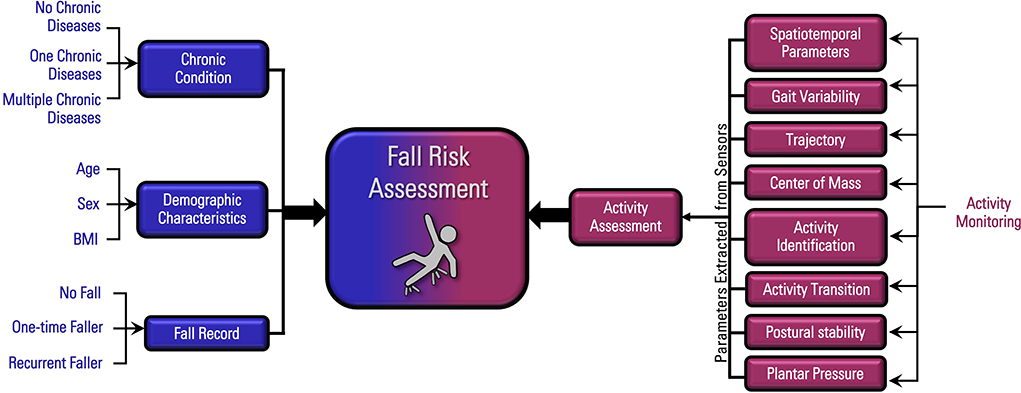An Unbiased View of Dementia Fall Risk
An Unbiased View of Dementia Fall Risk
Blog Article
The Definitive Guide for Dementia Fall Risk
Table of ContentsNot known Details About Dementia Fall Risk Some Known Facts About Dementia Fall Risk.Some Known Questions About Dementia Fall Risk.Dementia Fall Risk Can Be Fun For Anyone
An autumn threat evaluation checks to see how likely it is that you will certainly fall. The assessment generally includes: This consists of a collection of concerns concerning your total health and wellness and if you've had previous falls or issues with equilibrium, standing, and/or walking.Interventions are referrals that might minimize your risk of falling. STEADI includes three actions: you for your danger of falling for your danger variables that can be boosted to try to avoid falls (for example, equilibrium problems, damaged vision) to minimize your danger of falling by using reliable approaches (for example, supplying education and learning and resources), you may be asked numerous inquiries including: Have you dropped in the previous year? Are you worried regarding falling?
After that you'll sit down once more. Your service provider will inspect how much time it takes you to do this. If it takes you 12 seconds or more, it may imply you are at higher danger for an autumn. This examination checks strength and balance. You'll being in a chair with your arms went across over your chest.
Relocate one foot midway onward, so the instep is touching the big toe of your various other foot. Move one foot completely in front of the various other, so the toes are touching the heel of your various other foot.
Dementia Fall Risk Fundamentals Explained
The majority of drops happen as a result of numerous contributing aspects; consequently, handling the risk of falling begins with identifying the aspects that contribute to drop threat - Dementia Fall Risk. A few of one of the most appropriate threat aspects include: Background of previous fallsChronic clinical conditionsAcute illnessImpaired stride and equilibrium, lower extremity weaknessCognitive impairmentChanges in visionCertain high-risk medications and polypharmacyEnvironmental variables can likewise boost the risk for falls, consisting of: Insufficient lightingUneven or harmed flooringWet or unsafe floorsMissing or harmed handrails and order barsDamaged or incorrectly equipped tools, such as beds, wheelchairs, or walkersImproper use of assistive devicesInadequate supervision of individuals living in the NF, consisting of those who display aggressive behaviorsA effective fall risk administration program calls for a complete medical analysis, with input from all participants of the interdisciplinary group

The treatment strategy should likewise include treatments that are system-based, such as those that advertise a safe environment (suitable lights, visit their website handrails, grab bars, etc). The effectiveness of the treatments need to be reviewed occasionally, and the care plan changed as needed to mirror adjustments in the autumn risk assessment. Implementing a loss threat administration system using evidence-based finest technique can decrease the frequency of drops in the NF, while limiting the possibility for fall-related injuries.
The Ultimate Guide To Dementia Fall Risk
The AGS/BGS standard advises screening all adults matured 65 years and older for fall danger each year. This testing includes asking patients whether they have fallen 2 or more times in the previous year or looked for clinical interest for an autumn, or, if they have not dropped, whether they feel unsteady when walking.
Individuals who have fallen as soon as without injury must have their balance and stride reviewed; those with stride or balance abnormalities need to get extra evaluation. A background of 1 loss without injury and without stride or balance problems does not require more assessment past continued yearly loss risk testing. Dementia Fall Risk. A loss danger analysis is required as component of the Welcome to Medicare examination

3 Simple Techniques For Dementia Fall Risk
Documenting a drops background is just one of the top quality signs for autumn prevention and management. An essential component of risk evaluation is a medication evaluation. Numerous classes of drugs increase autumn risk (Table 2). Psychoactive drugs specifically are independent forecasters of drops. These medicines tend to be sedating, modify the sensorium, and impair equilibrium and stride.
Postural hypotension can typically be eased by minimizing the dosage of blood pressurelowering drugs and/or quiting medicines that have orthostatic hypotension as a side impact. Usage of above-the-knee support tube and copulating the head of the bed boosted may also lower postural decreases in blood stress. The recommended elements of a fall-focused physical assessment are displayed in Box 1.

A Yank time greater than or equivalent to 12 secs suggests high fall risk. Being incapable to stand up from a chair of knee elevation without making use of one's arms shows boosted fall risk.
Report this page